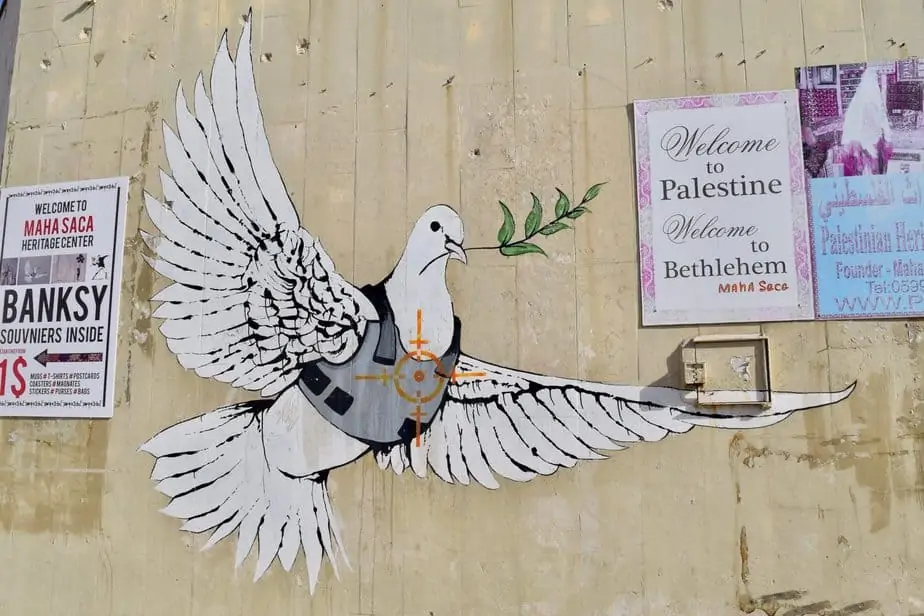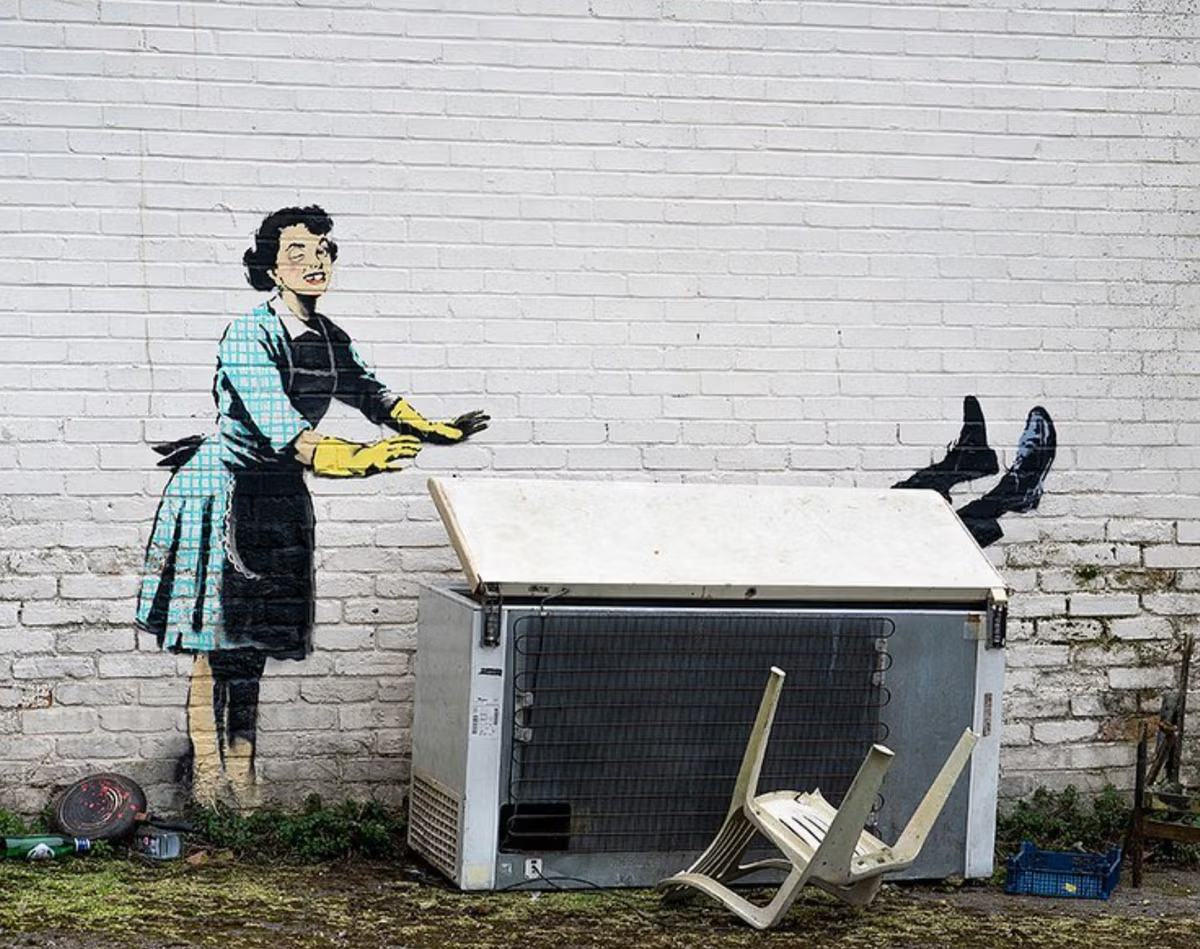Banksy

Banksy is the phantom of public space, a street artist whose anonymity is as iconic as his stenciled works. Emerging from Bristol’s underground scene in the 1990s, Banksy fused graffiti with biting social commentary to become the most recognized (and elusive) street artist of our time. Known for his signature stenciling and dark wit, Banksy uses walls, not galleries, as his medium, blending satire, politics, and public spectacle. His identity remains unconfirmed, but his presence is unmistakable: a ghost in the machine of consumer culture.

Whether spray-painting on the West Bank wall, transforming Venice’s Biennale into a critique of tourism, or staging pop-up installations like the dystopian theme park 'Dismaland', Banksy uses public space as a platform for radical commentary. His work critiques war, capitalism, surveillance, and media with an immediacy that transcends language—making art that is meant to be encountered, not owned.

He redefined what it means to be a contemporary artist, not just by selling million-dollar canvases, but by shredding them in real time. From the viral 'Love is in the Bin' stunt at Sotheby’s to his NHS tribute 'Game Changer', Banksy’s work constantly blurs the line between vandalism and fine art, protest and performance, public gift and private commodity.

The ‘Banksy Effect’ has reshaped how the world sees street art, elevating it from subculture to global phenomenon. He’s inspired legions of imitators, collectors, critics, and activists without ever revealing his face. In an age obsessed with image and identity, Banksy’s greatest trick may be reminding us that the message matters more than the messenger.

?
Why does Banksy choose to remain anonymous?
What is the 'Banksy Effect,' and how has it changed street art?
How do Banksy’s works critique capitalism and war?
What is the significance of 'Girl with Balloon' and its shredding at auction?
How does Banksy challenge the traditional art world and its institutions?
In what ways has Banksy inspired other artists and movements?
What is the role of humor in Banksy’s social commentary?
How does Banksy’s use of public space democratize art?
Dig Deeper
A look at the mysterious figure of Banksy, his most iconic works, and how he uses art to disrupt and question power.
Discover more

Invader
Invader redefined what it means to make your mark—one pixel at a time. His art invites us to look up, wander differently, and question who controls the walls around us. In a world consumed by screens, he gave pixels the power to liberate, provoke, and delight in the streets where we live.

Shepard Fairey
Fairey transformed street corners into soapboxes and stickers into symbols of dissent. Through OBEY, he flipped propaganda on its head—using its own weapons of repetition and command to spark critical thinking instead of compliance. His work reminds us that when we question everything, even a simple image can become a revolutionary act.

Keith Haring
Haring taught us that art doesn’t need a fancy frame, it can live on any wall, everywhere. With chalk, color, and courage, he transformed public spaces into calls for justice and joy. His work reminds us that creativity can be a tool for visibility, healing, and collective action.
Further Reading
Stay curious!
